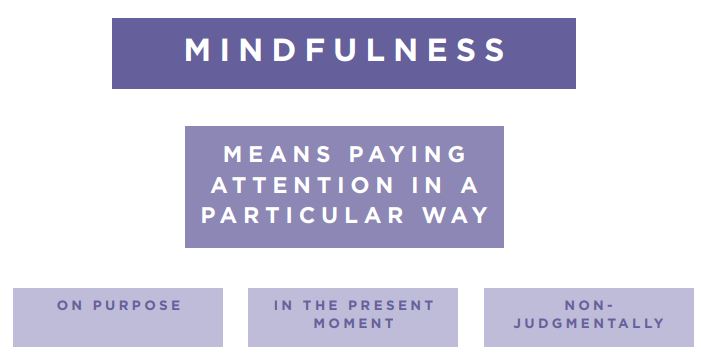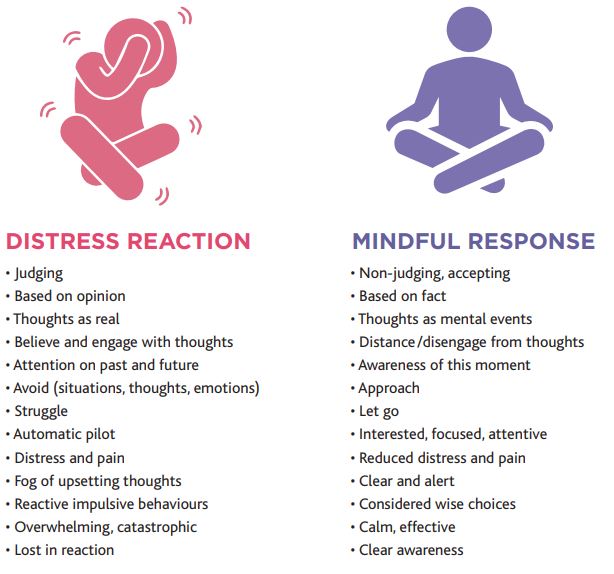What is Mindfulness?
Mindfulness is an ancient Buddhist practice which is very relevant for life today. It is a very simple concept. Mindfulness means paying attention in a particular way: on purpose, in the present moment, and non-judgementally. This increases awareness, clarity and acceptance of our present-moment reality. Mindfulness does not conflict with any beliefs or tradition, religious, cultural or scientific. It is simply a practical way to notice thoughts, physical sensations, sights, sounds, smells – anything we might not normally notice. The actual skills might be simple, but because it is so different to how our minds normally behave, it takes a lot of practice. Being mindful helps us to train our attention. Our minds wander about 50% of the time, but every time we practise being mindful, we are exercising our attention “muscle” and becoming mentally fitter.We can take more control over our focus of attention instead of passively allowing our attention to be dominated by distressing thoughts. Mindfulness might simply be described as choosing and learning to control our focus of attention, and being open, curious and flexible.

Try to respond to stressful situations mindfully:

Consider the most distress you have experienced or are ever likely to experience. Is that time in the past? Is it perhaps in the future? Right now, at this very moment, are you the most distressed you have ever been or are likely to be? If not, then perhaps that’s a good reason to learn to be mindful – to put your attention to this very moment.
Mindful Breathing:
We can focus our attention on our breathing when we feel distressed, which will help calm our mind and our body.
The primary goal of mindful breathing is simply a calm, non-judging awareness, allowing thoughts and feelings to come and go without getting caught up in them. Take 10 minutes each day to practise mindful breathing:
- Sit comfortably, with your eyes closed and your spine reasonably straight.
- Bring your attention to your breathing.
- Imagine that you have a balloon in your stomach. Every time you breathe in,the balloon inflates.
- Each time you breathe out,the balloon deflates. Notice the sensations in your abdomen as the balloon inflates and deflates.Your abdomen rising with the in-breath, and falling with the out-breath.
- Thoughts will come into your mind, and that’s okay, because that’s just what the human mind does. Simply notice those thoughts,then bring your attention back to your breathing. Likewise, you can notice sounds, physical feelings, and emotions, and again, just bring your attention back to your breathing.
- You don’t have to follow those thoughts or feelings, don’t judge yourself for having them, or analyse them in any way. It’s okay for the thoughts to be there. Just notice those thoughts, and let them drift away, bringing your attention back to your breathing.
- Whenever you notice that your attention has drifted off and is becoming caught up in thoughts or feelings,simply note that the attention has drifted, and then gently bring the attention back to your breathing.
- It’s okay and natural for thoughts to enter into your awareness, and for your attention to follow them. No matter how many times this happens, just keep bringing your attention back to your breathing.
Source: seafarerswelfare
